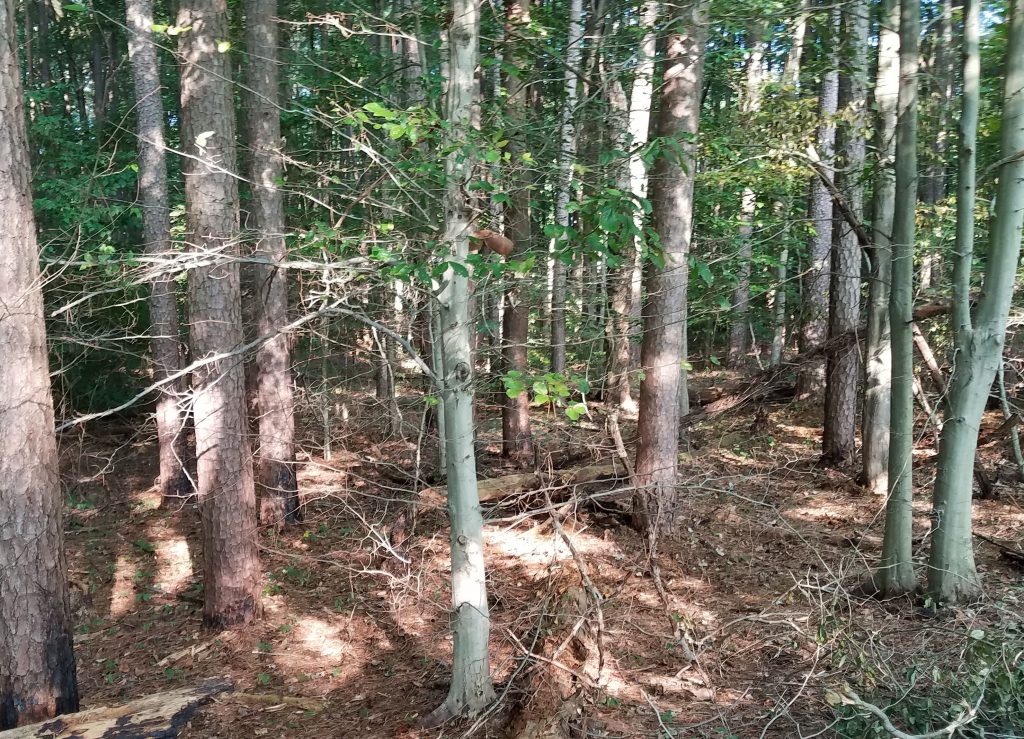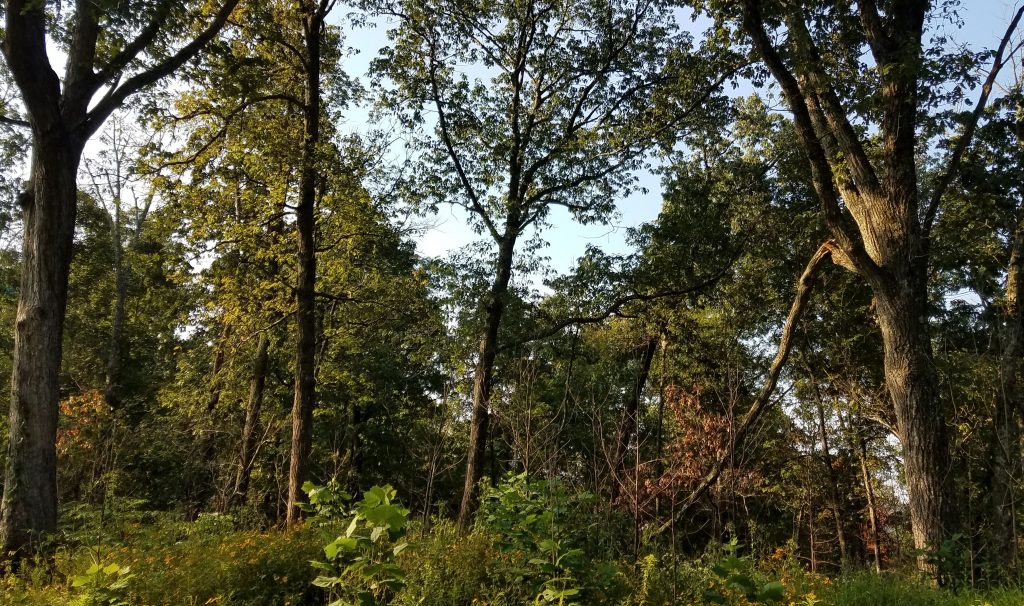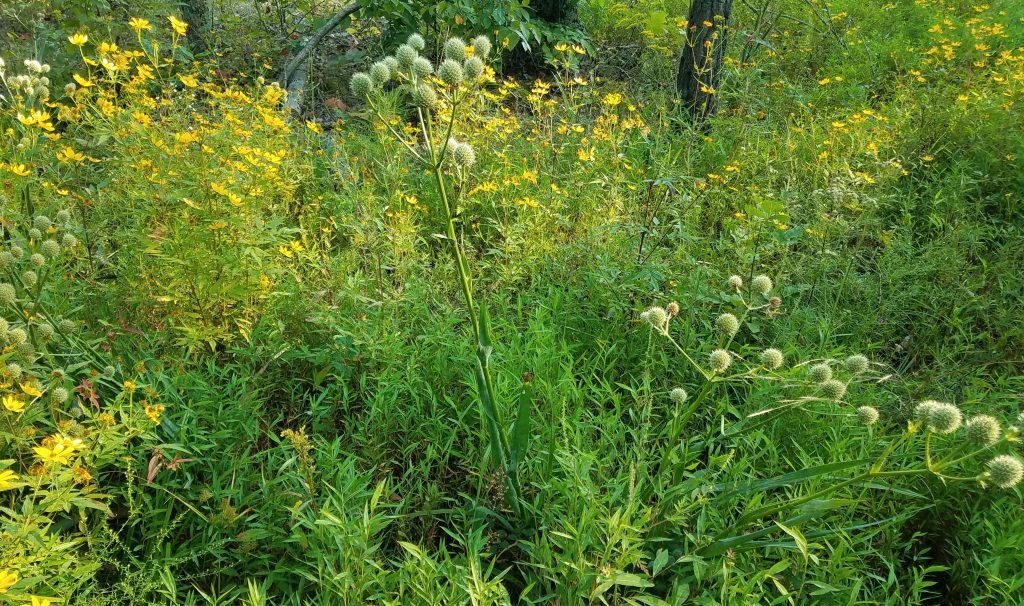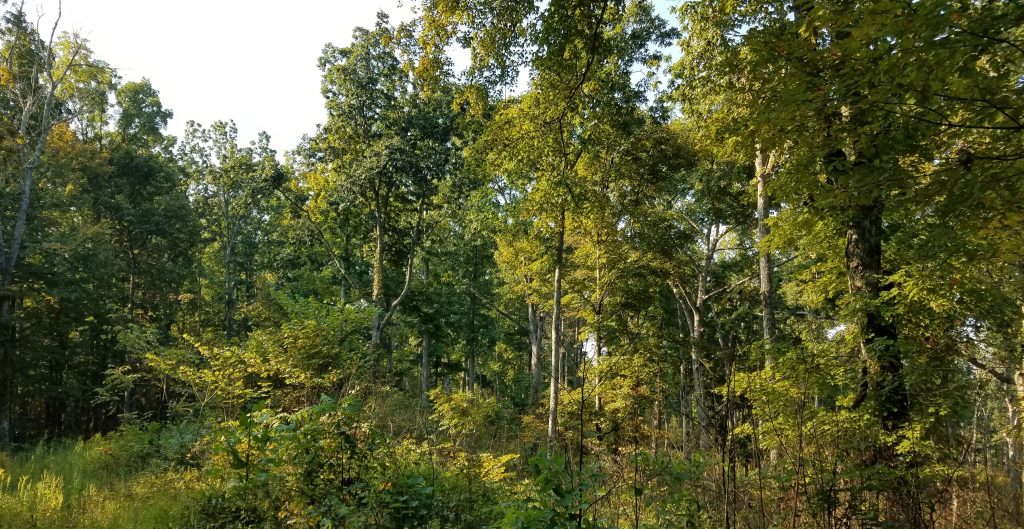If we don’t plan now for the restoration of oak forests, our children and grandchildren will not have them. It takes 40-60 years to grow and oak tree and they are not regenerating fast enough.
It is easy to overlook this problem. Oaks are common trees. There are lots of oaks … now. But if you look under the big oak trees, you find very few little oak trees. Little oak trees don’t like to grow in the shade of big oak trees. That means that oaks need disturbance. Fire was much more common in oak forests in the past. We need it again.
I stopped off at Hoosier National Forests to talk to Travis Swaim, who is managing for oak regeneration. They recently burned 750 acres and I wanted to see what it looked like. I am doing oak regeneration on parts of my land, on a smaller scale of course.
Southern Indiana is an interesting ecology. It is hilly. Looks like western Virginia, not the Indiana we see in the flat north.
Travis talked about the differences on the Hoosier National Forest. They have relatively dry south facing slopes, where oaks can compete well and wetter northern slopes with deeper soils where the poplars and maples dominate. They also have karst landscapes, i.e. very permeable limestone soils.
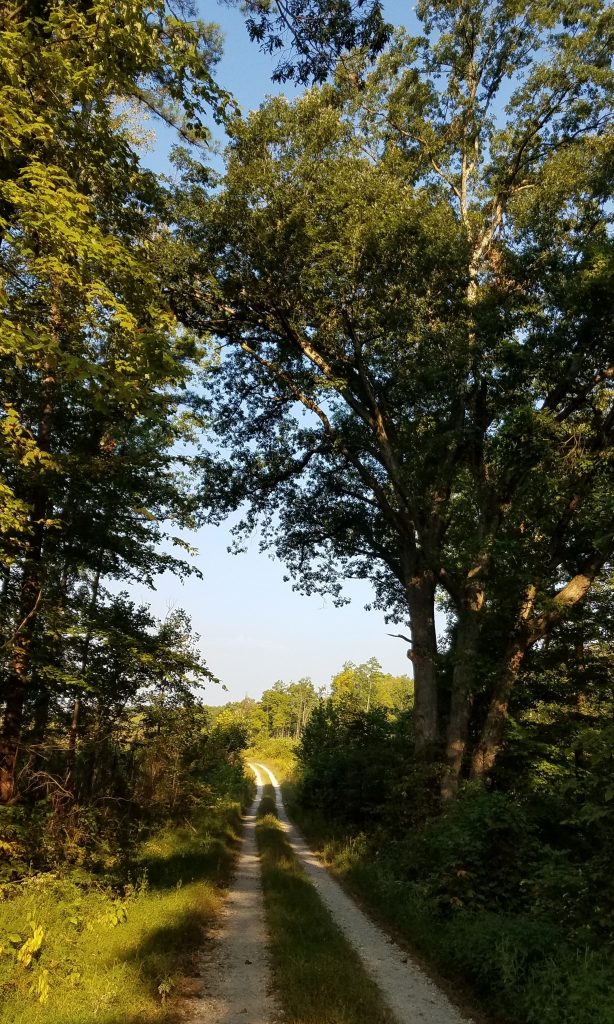
These were and will be again hardwood forests. In fact, this is the heart of the hardwood. Settlers cleared these forests and much of what is the Hoosier National Forests was exhausted when the government acquired the land in the 1930s. CCC and others planted pine, longleaf and white pine. These are now mature and foresters want to transition back to hardwoods, including oak.
My pictures are from my walk in the woods to see the burn. They also thinned, leaving high quality oaks for regeneration. Travis says they may have to burn again, but maybe not. They will have to monitor and see how it goes. It is an art.
My pictures show the open oak forest. My second picture is rattlesnake master. I was glad to see this in the burned zone, since I extrapolate that my own rattlesnake master will survive the fires we plan to set in December. Last picture is deeper woods with beech trees. I was glad to see the beech survived. I like beech. These were near the road, where they first set the fire, so it was not that hot.

